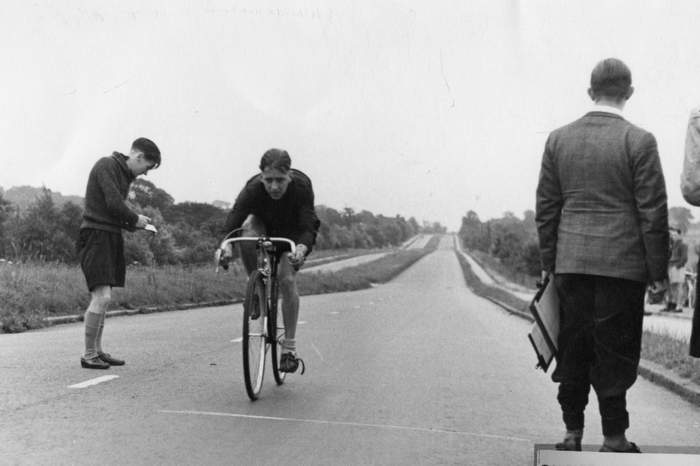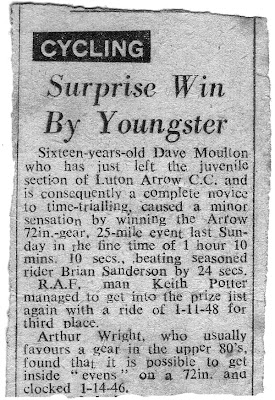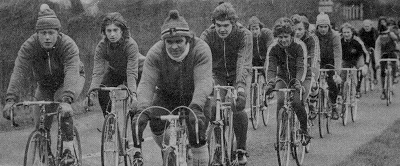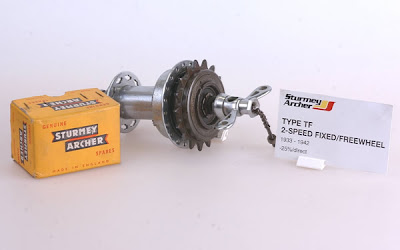NelsonVails
 Mon, February 4, 2008
Mon, February 4, 2008 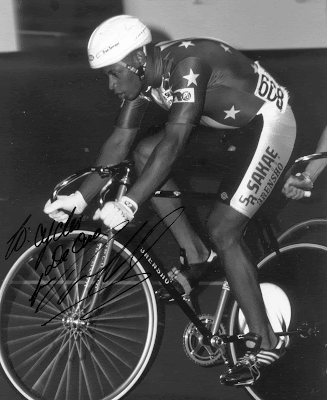
February being “Black History Month” I thought I would touch on a piece of history that is just twenty, some odd, years old.
In the 1984 Olympic Games, held in Los Angeles, a young black cyclist who grew up in the projects of Harlem, in New York City, won a Silver Medal on the track in the 1,000 meter sprint.
I get the feeling that there are many cyclists out there who have never heard of Nelson Vails, or if they have heard of him have allowed the memory to slip into the far reaches of their memory banks. As for the rest of the population, who remembers a silver medalist in an obscure sport like sprint cycling?
I remember because I met then 19 year old Nelson Vails in 1979, or early 1980 when I worked for Paris Sport in New Jersey. I worked in the frameshop at the back of Park Cycles, a bike shop owned by Vic and Mike Fraysee. Just seven miles from Manhattan, over the George Washington bridge, cyclists from New York City would ride the bike path over the bridge to visit the bike store. It was on such a visit that Mike Fraysee brought Nelson down to the frameshop and introduced him as an up and coming young bike racer. Later on many trips I made to Lehigh County Velodrome, near Allentown in Pennsylvania, I got to see Nelson Vails race.
It was on such a visit that Mike Fraysee brought Nelson down to the frameshop and introduced him as an up and coming young bike racer. Later on many trips I made to Lehigh County Velodrome, near Allentown in Pennsylvania, I got to see Nelson Vails race.
Nelson was the youngest of 10 children and grew up in Harlem; he was a bicycle nut by the time he reached his teen years.
Entering races in Central Park and at the bumpy, aging velodrome in Queens, he raced with an assortment of miss-matched cheap equipment, and worn out clothing with holes. He wore a pair of second hand cycling shoes that were too big for him, but in spite of this would hold his own against well-trained athletes on better equipment.
By aged 19 Vails was married and had children of his own; he had to make a living. His natural choice was that of a bike messenger in Manhattan. Bike messengers carry everything from letters and jewels to wedding gowns and baseball uniforms, all over the town, at terrifying speed.
The more packages a messenger carries in a day the more money they make. They learn to ride at the speed of traffic when it is moving, riding in the slipstream of delivery vans. Squeezing through narrow gaps in traffic whenever it is stopped or moving slow.
One would think an eight or ten hour shift as a bike messenger would be training enough, but Nelson would ride 40 miles in the morning before work, and he would also ride on weekends. All this training, plus the turn of speed he developed on the streets of Manhattan took him all the way to a place on the US National team in 1982. He won a Gold Medal in the Pan American games, held in Venezuela in 1983.
All this training, plus the turn of speed he developed on the streets of Manhattan took him all the way to a place on the US National team in 1982. He won a Gold Medal in the Pan American games, held in Venezuela in 1983.
Then in 1984 came disappointment when Nelson was beaten by Mark Gorski in the Olympic trials. The structure of the 1,000 meter sprint event was that only one rider from each country could compete.
Then world politics took over and changed the fate of Nelson Vails. The Russians dropped out of the Olympics and this opened up a spot for one extra rider. The Olympic finals was a repeat of the trials earlier; Mark Gorski won the Gold, and Nelson Vails the Silver. Tsutomo Sakamoto of Japan took the Bronze. What I remember about Nelson Vails was his personality; always smiling, always joking. His attitude on the track was the same as when he was a bike messenger in Manhattan. “Stay out of my way; I have a job to do.”
What I remember about Nelson Vails was his personality; always smiling, always joking. His attitude on the track was the same as when he was a bike messenger in Manhattan. “Stay out of my way; I have a job to do.”
In 1986 Nelson made his acting debut in the movie “Quicksilver” starring Kevin Bacon. Appropriately, a story about bike messengers; he was cast as “Messenger in Maroon Beret.”
Nelson Vails has my utmost admiration. He came from a poor and underprivileged neighborhood in Harlem, and despite this, through hard work and determination made it to the top, in what could be seen as a middle class white man’s sport.
The last I heard Nelson was living in Boulder, Colorado; still riding his bike, cycling in recreational tours across the country. You can read more about Nelson Vails on BlackAthlete.com.
Picture source:
Top picture
2nd. picture
3rd. picture
Last picture
 Dave Moulton | Comments Off |
Dave Moulton | Comments Off | 

















